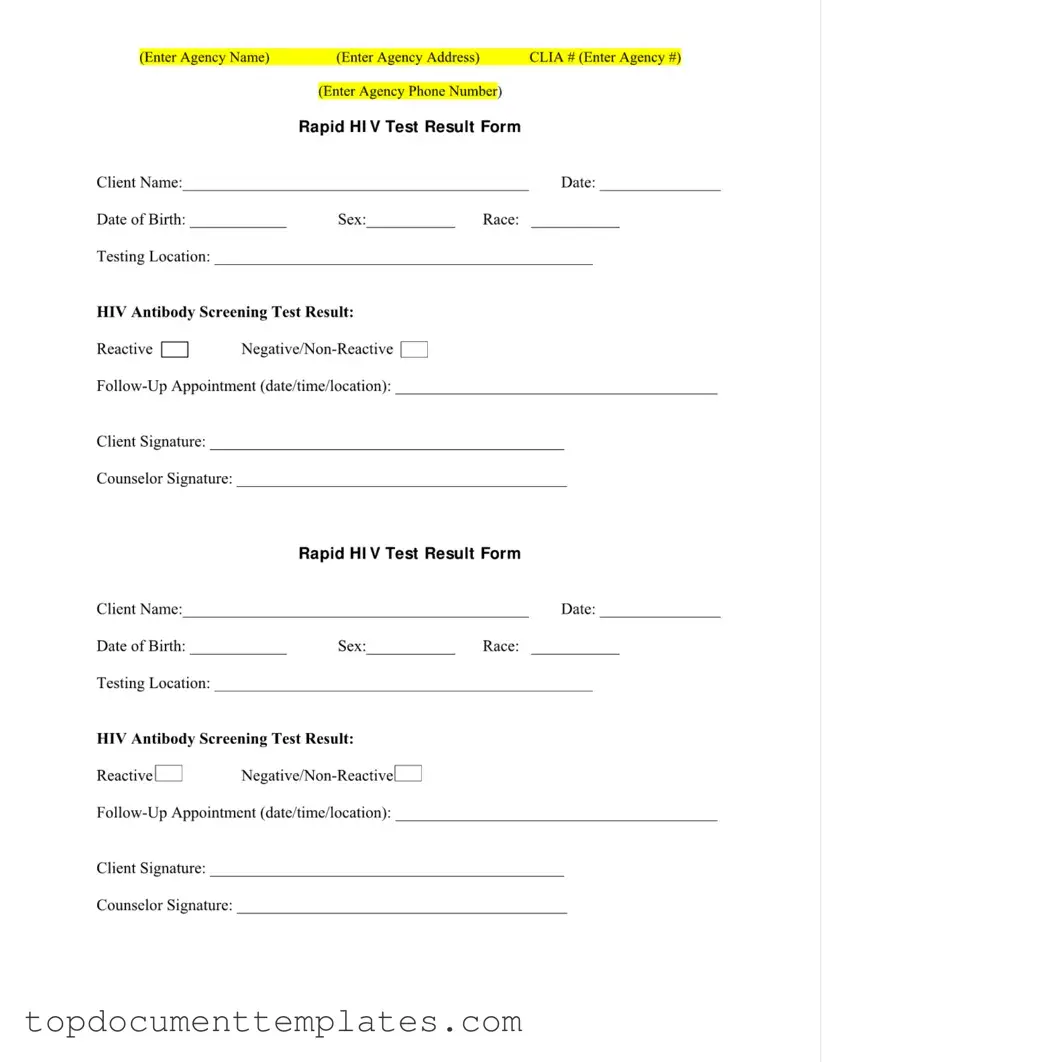Blank Negative Hiv Test PDF Form
The Negative HIV Test Form is a crucial document that certifies an individual's status after undergoing an HIV antibody screening. This form includes essential details such as the client's name, date of birth, testing location, and the result of the test, which can indicate either a reactive or non-reactive outcome. Understanding this form is vital for anyone seeking clarity on their health status, and for those responsible for administering these tests.
To ensure accurate documentation, fill out the form by clicking the button below.
Open This Form
